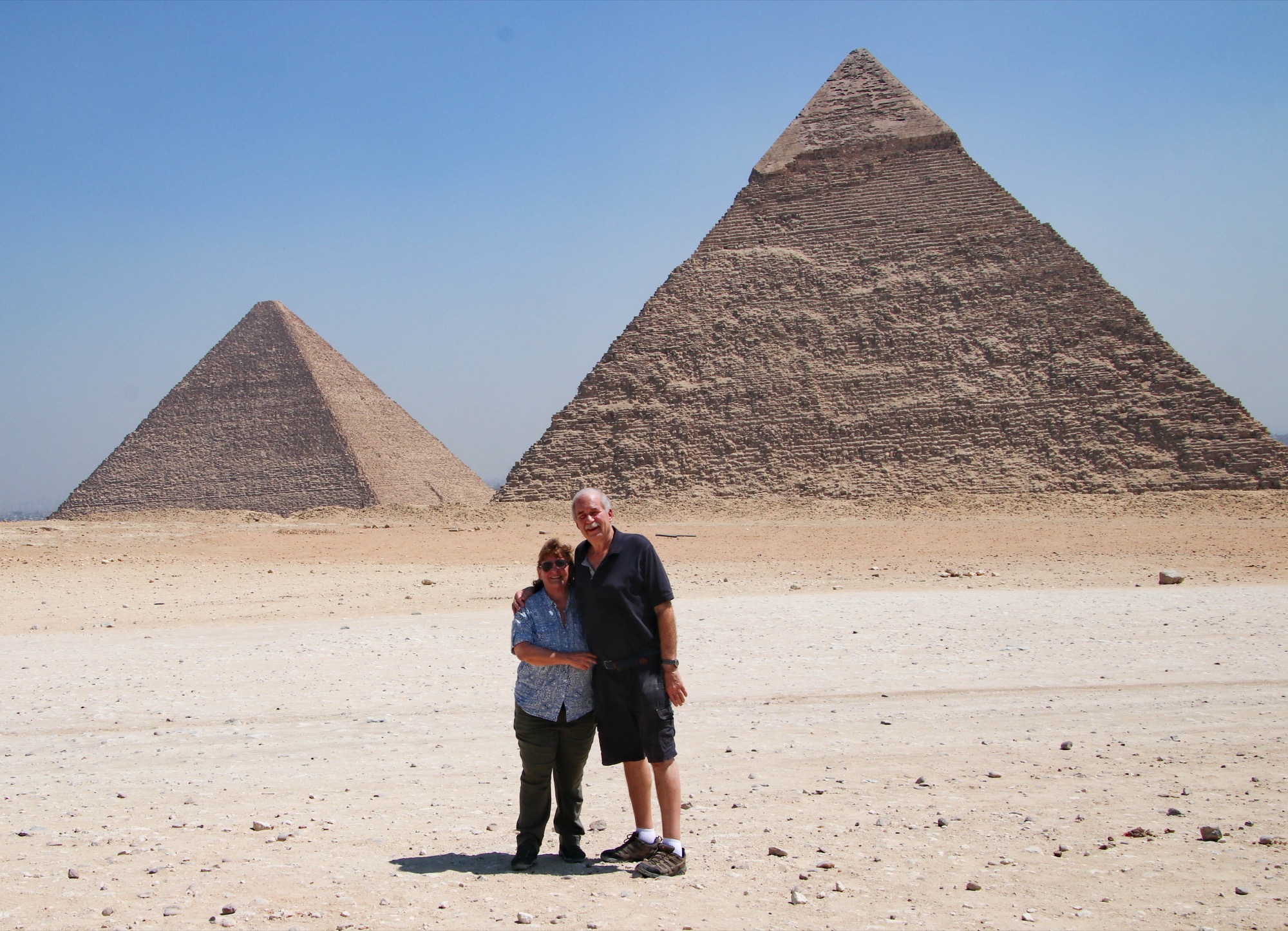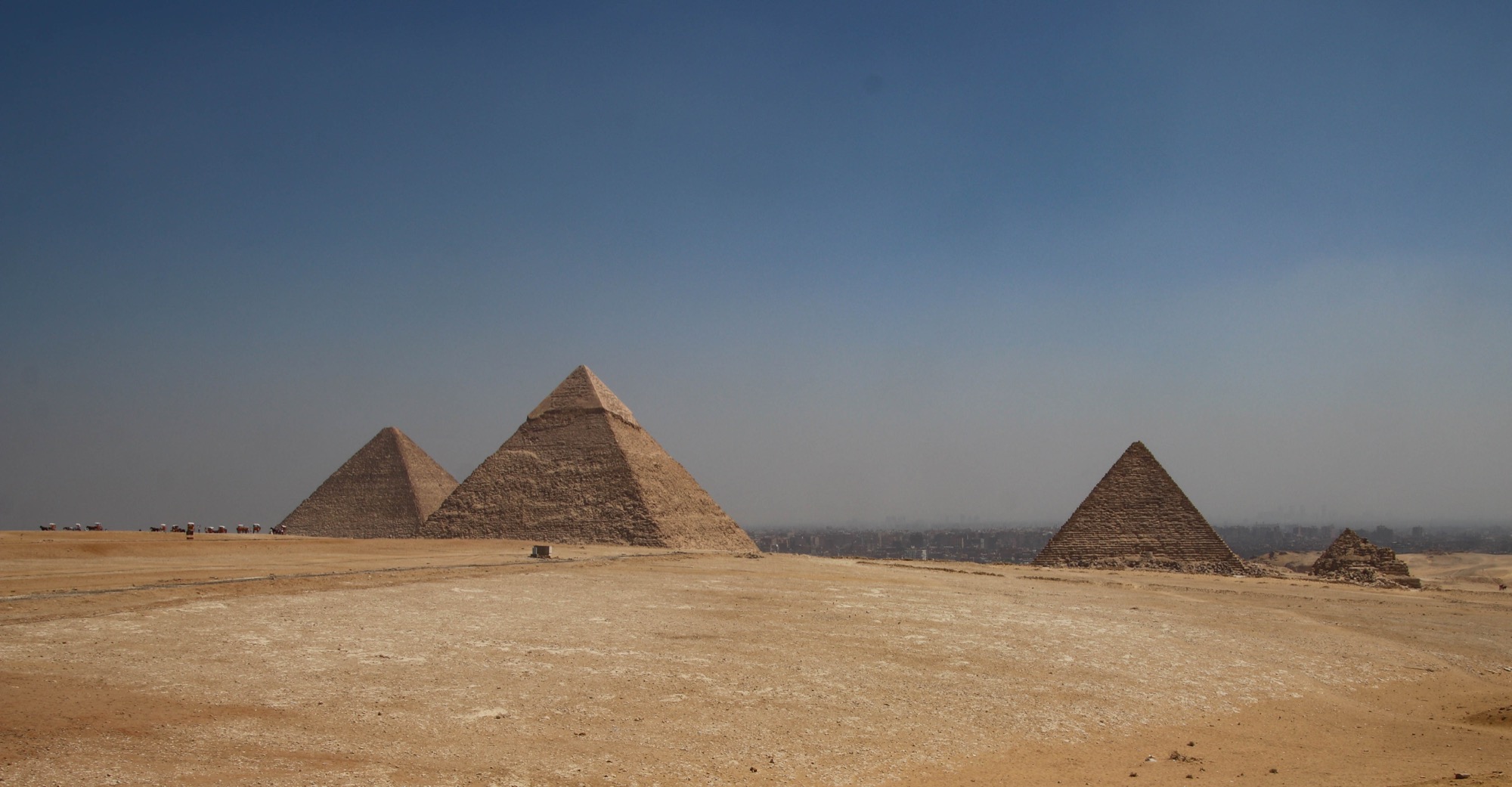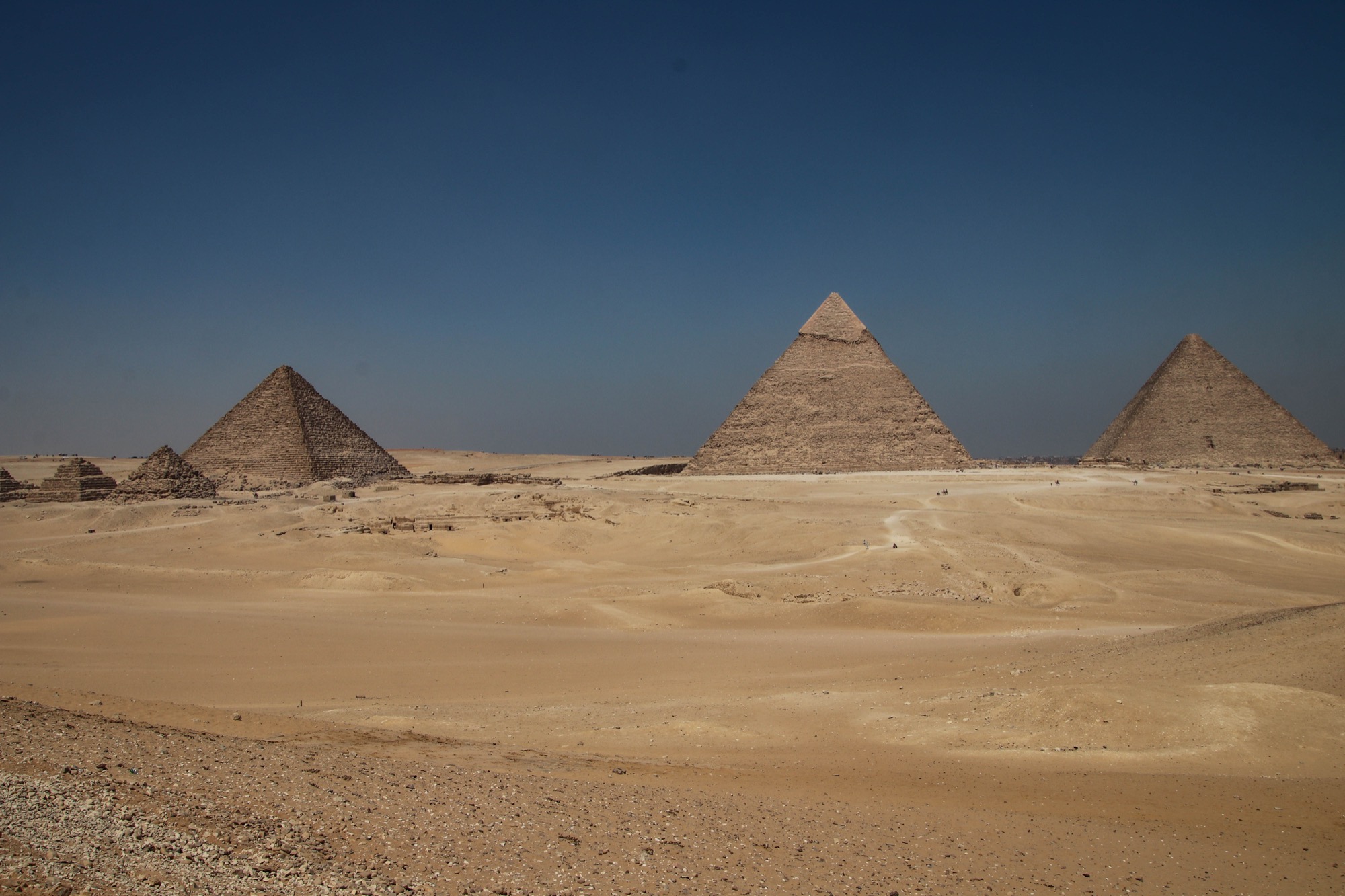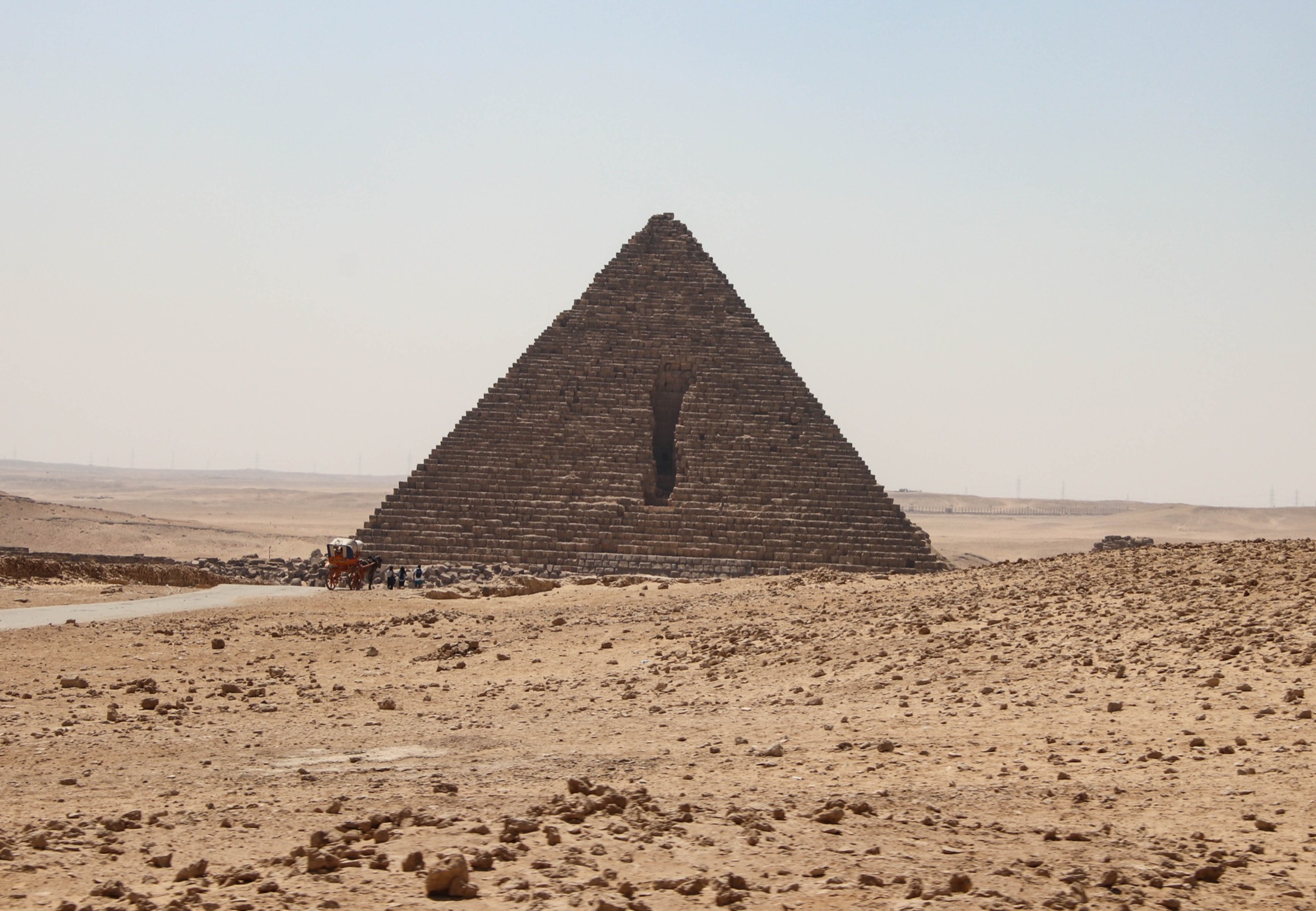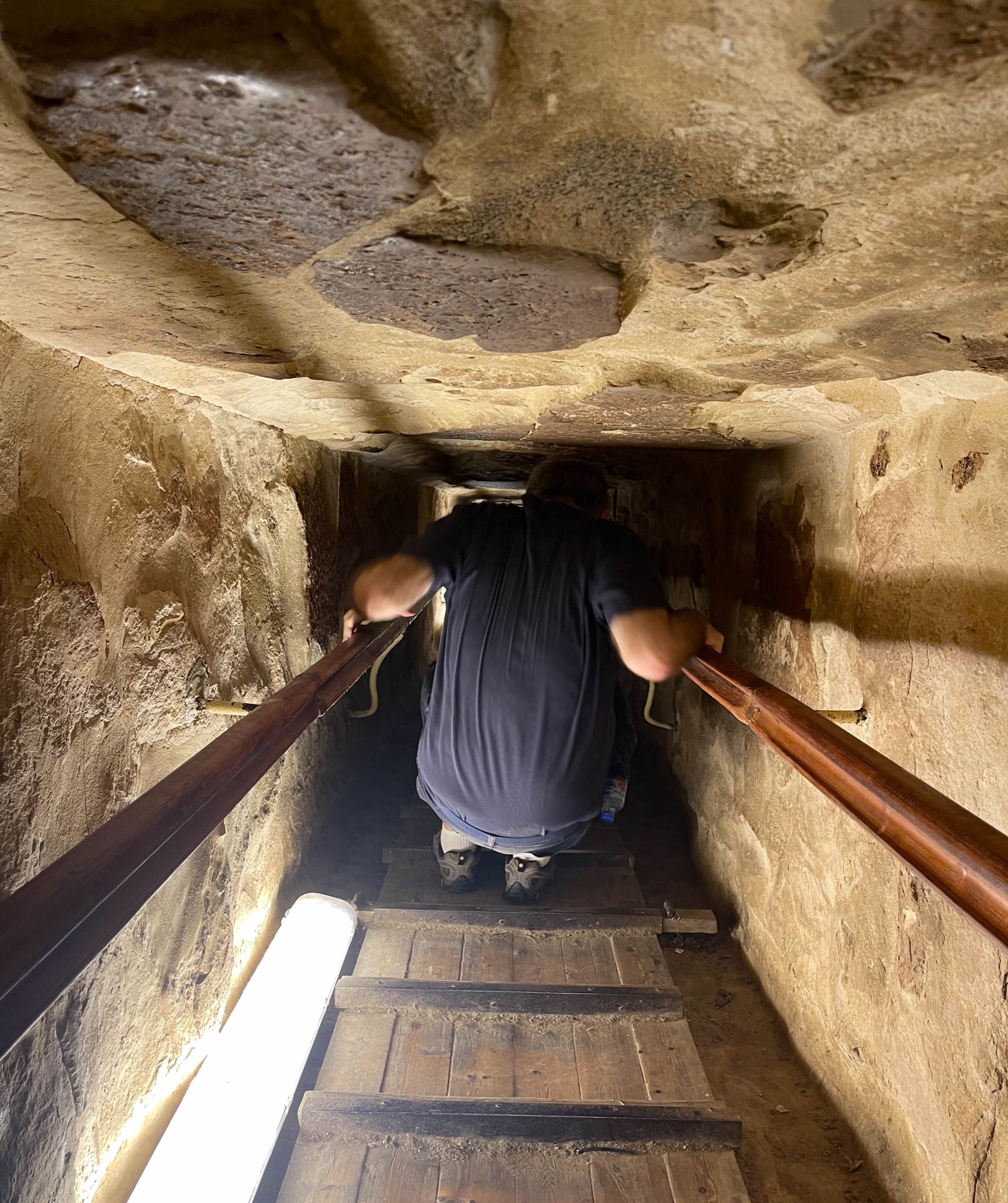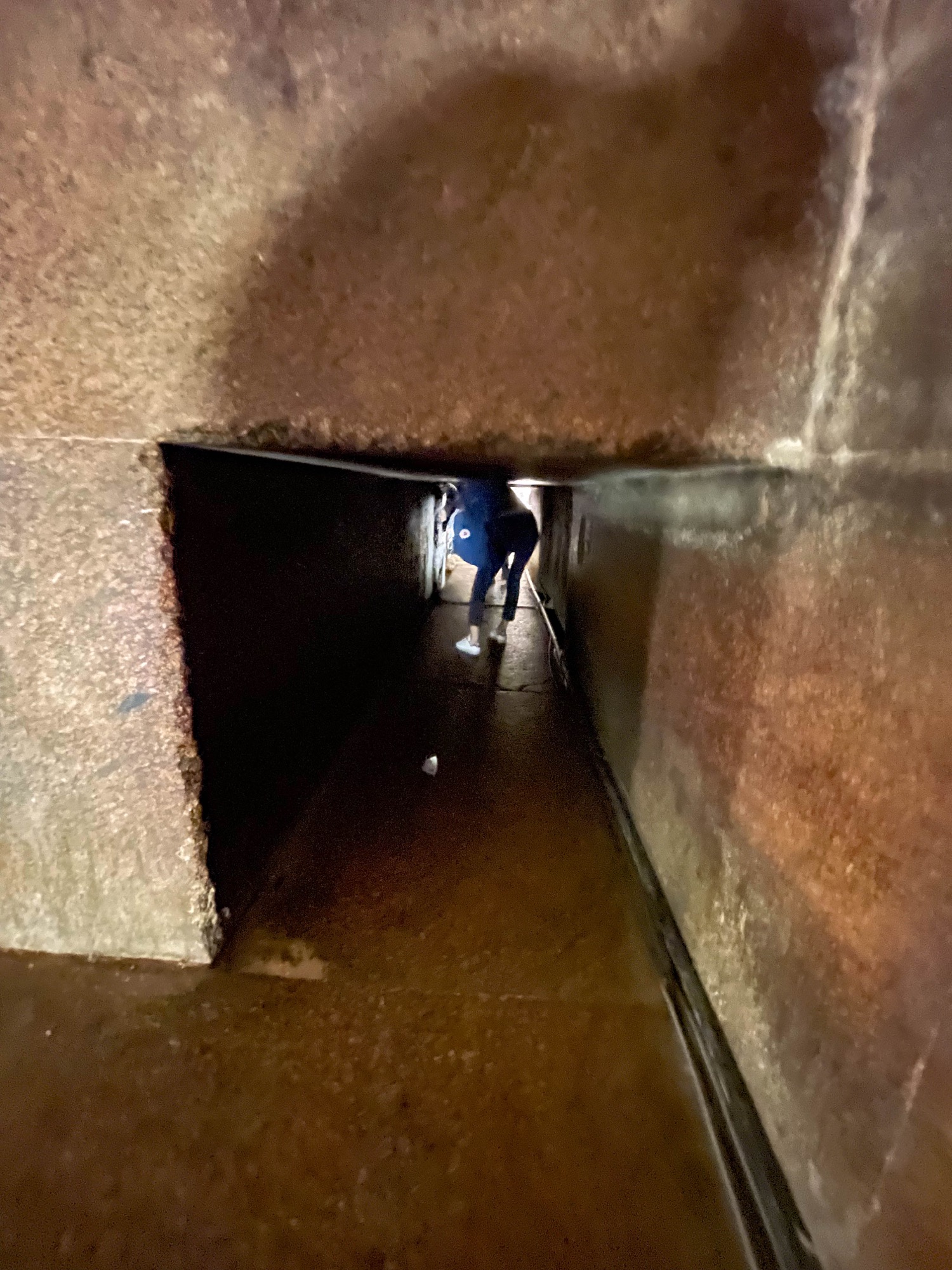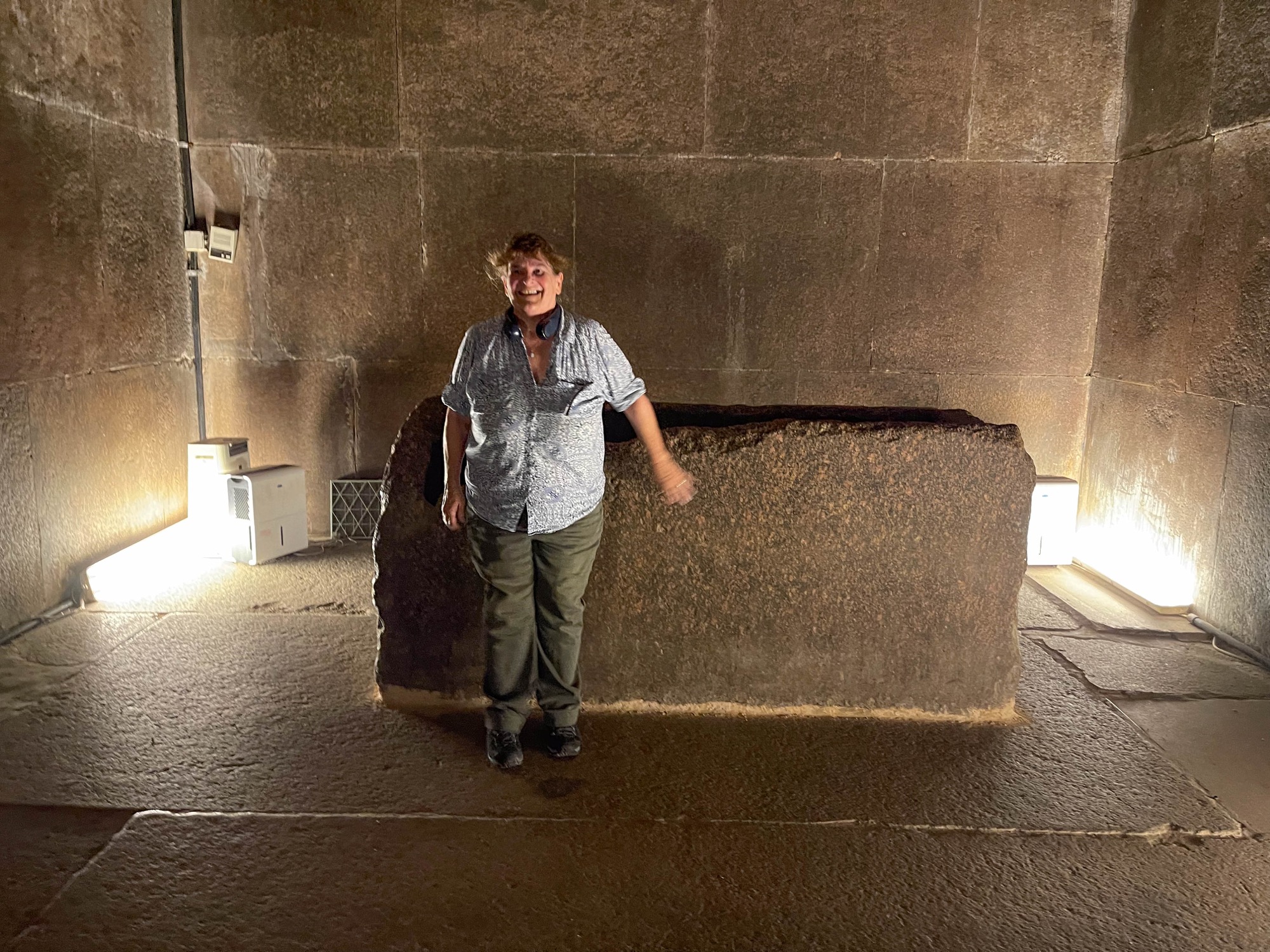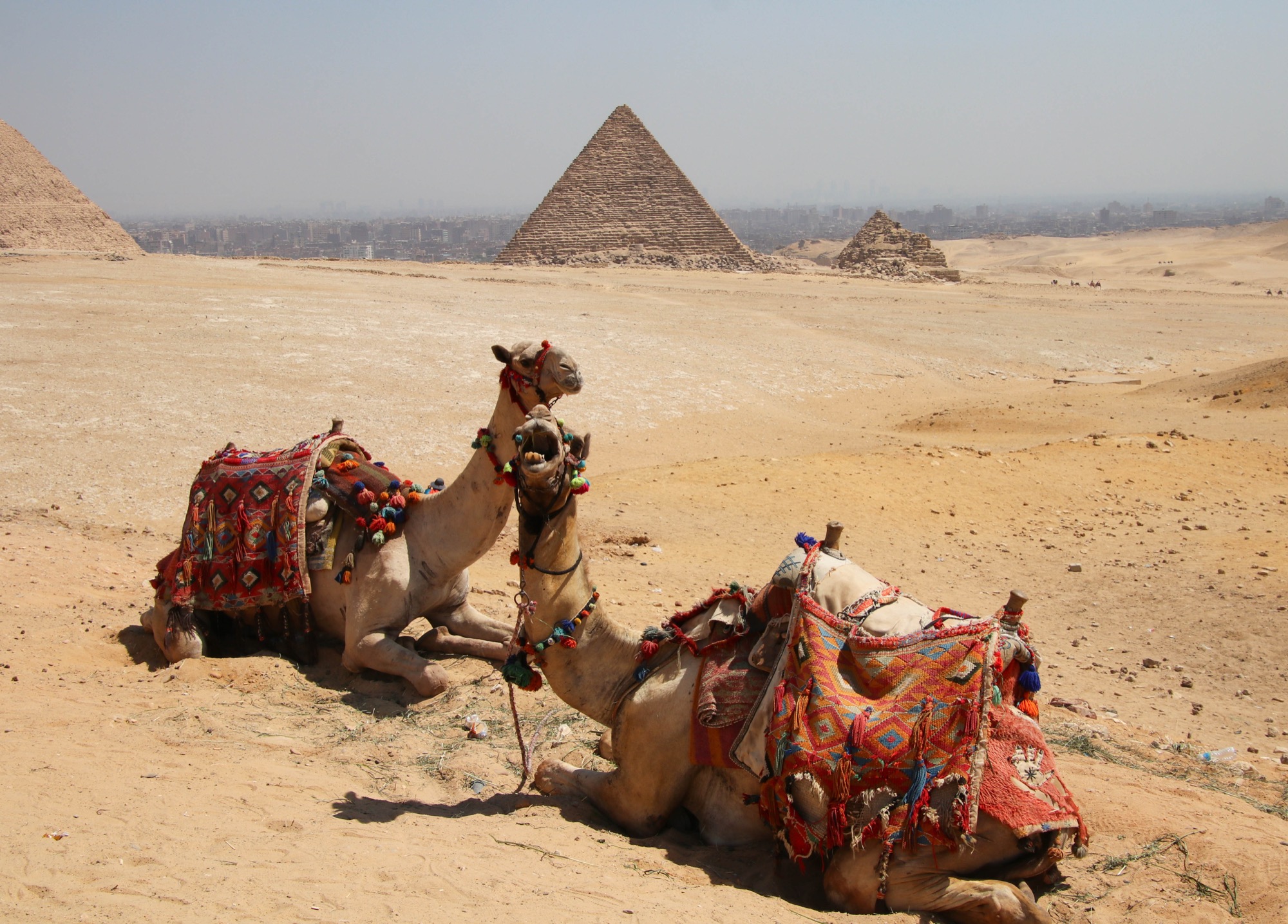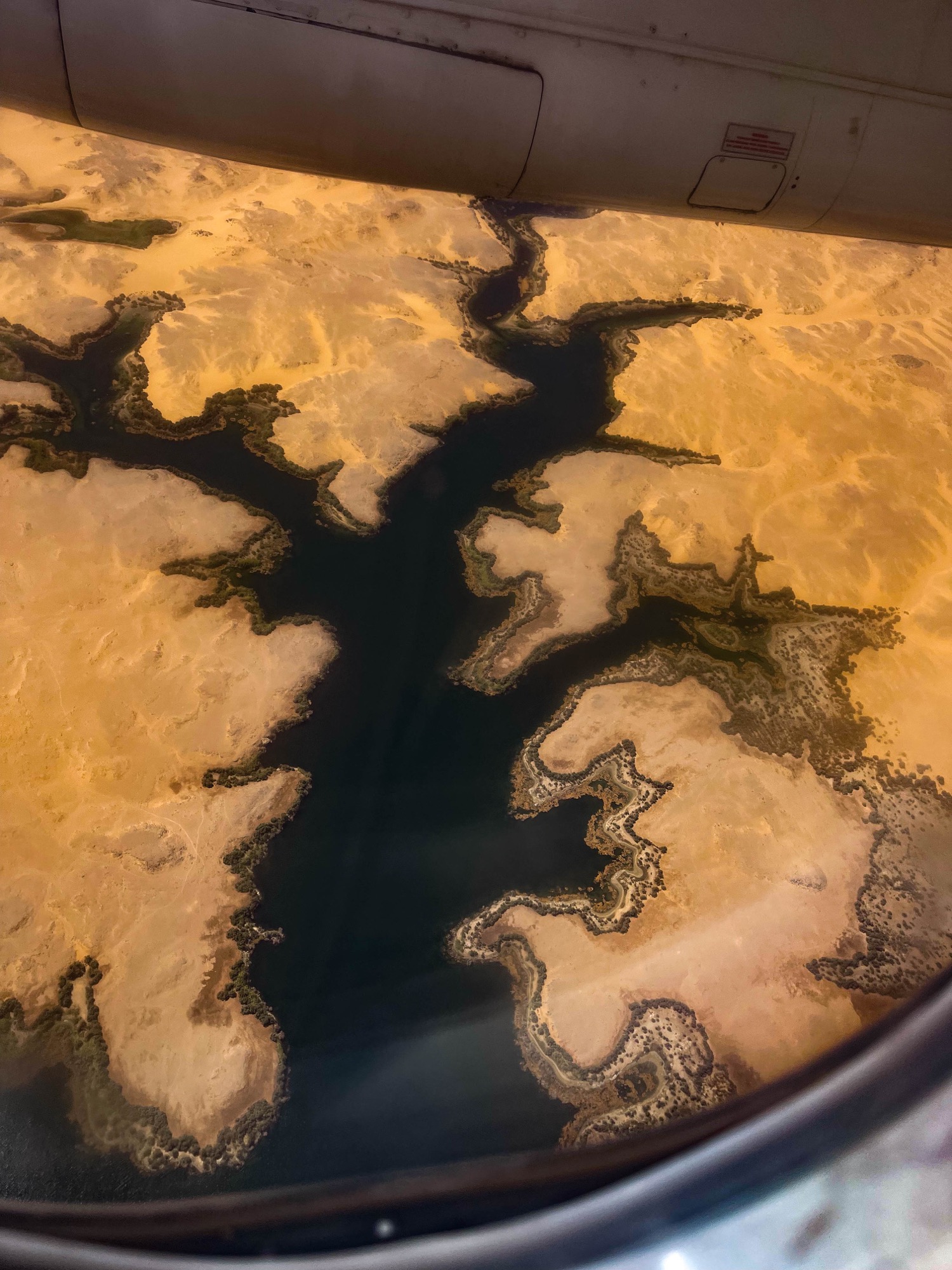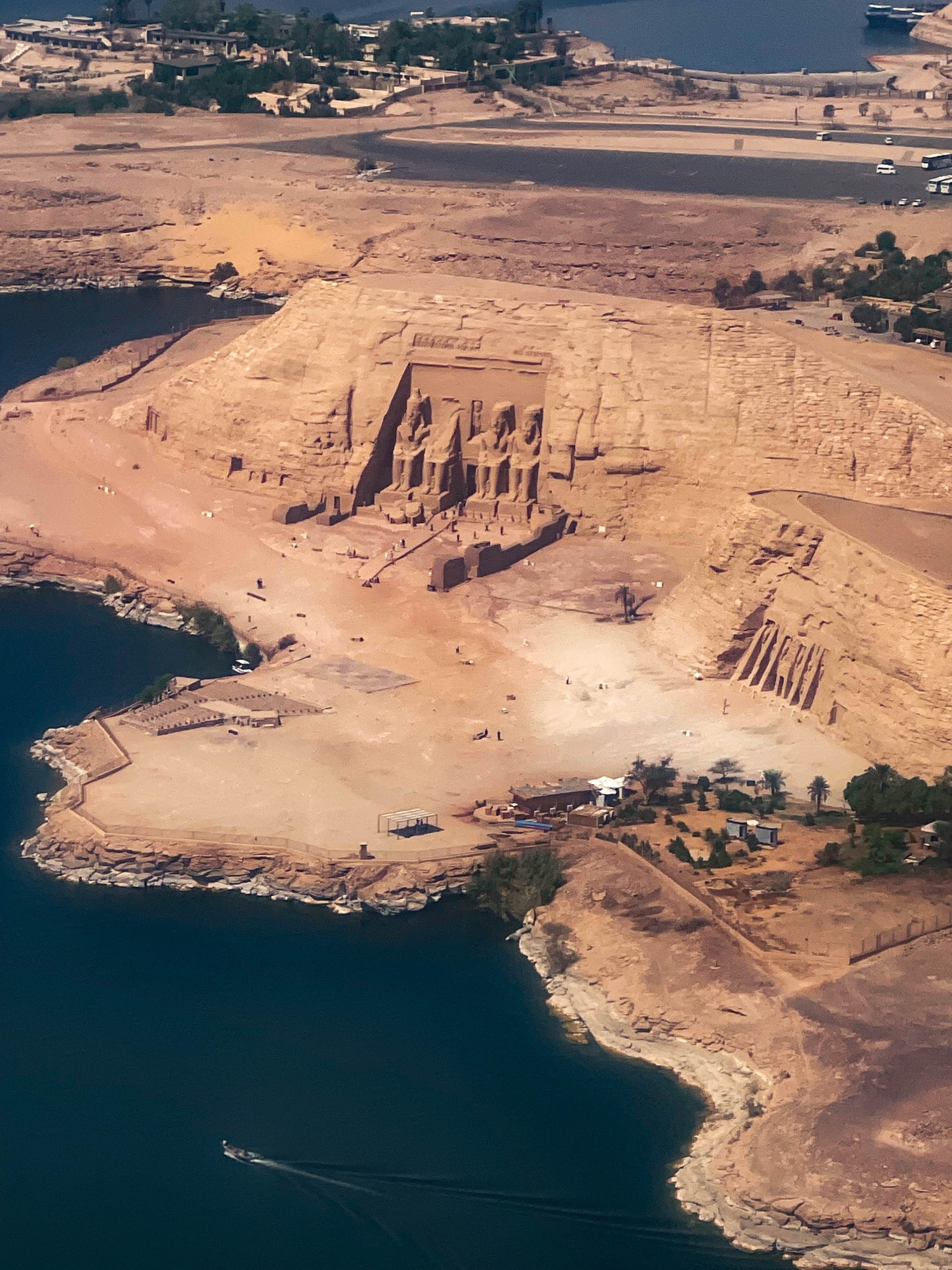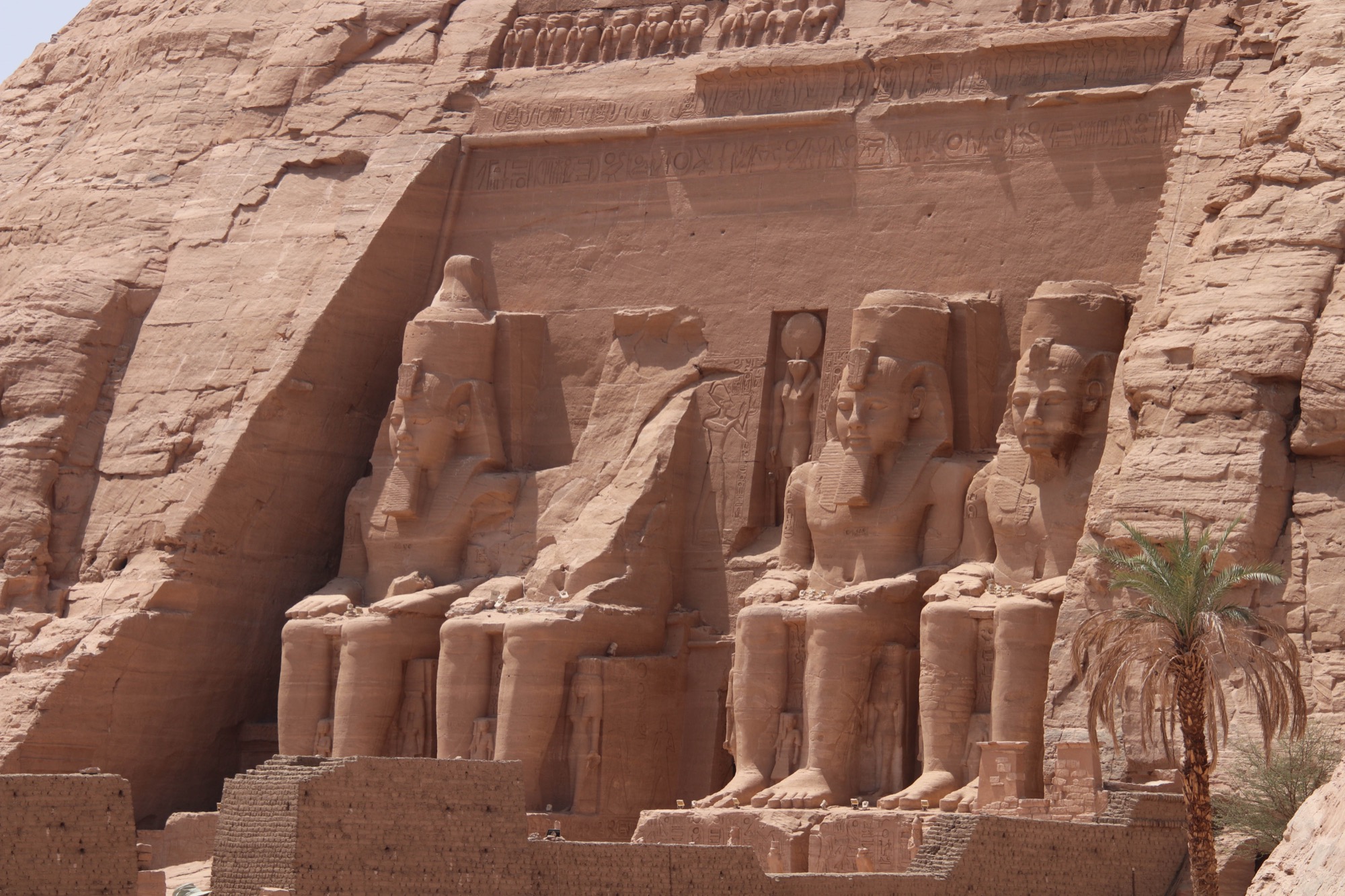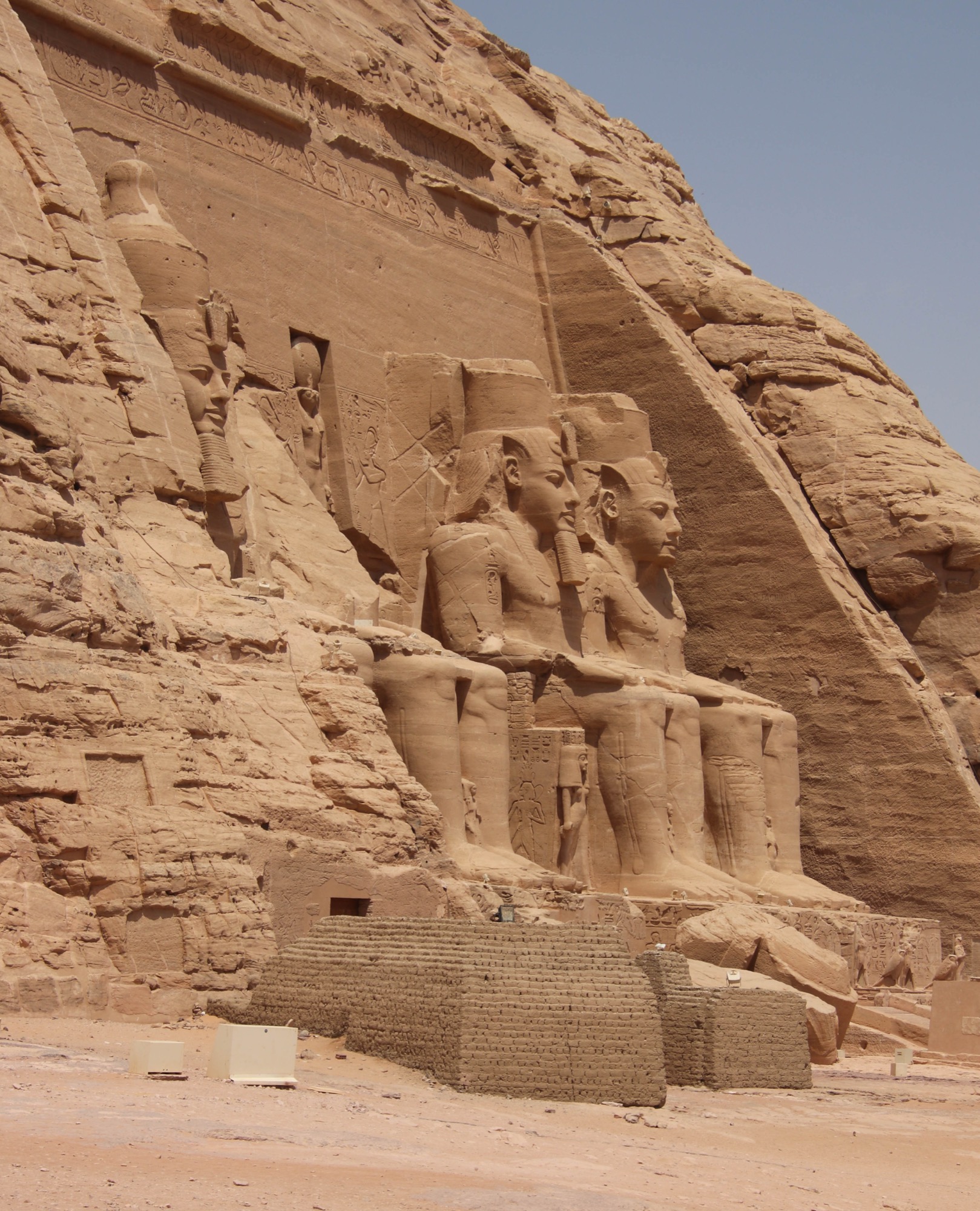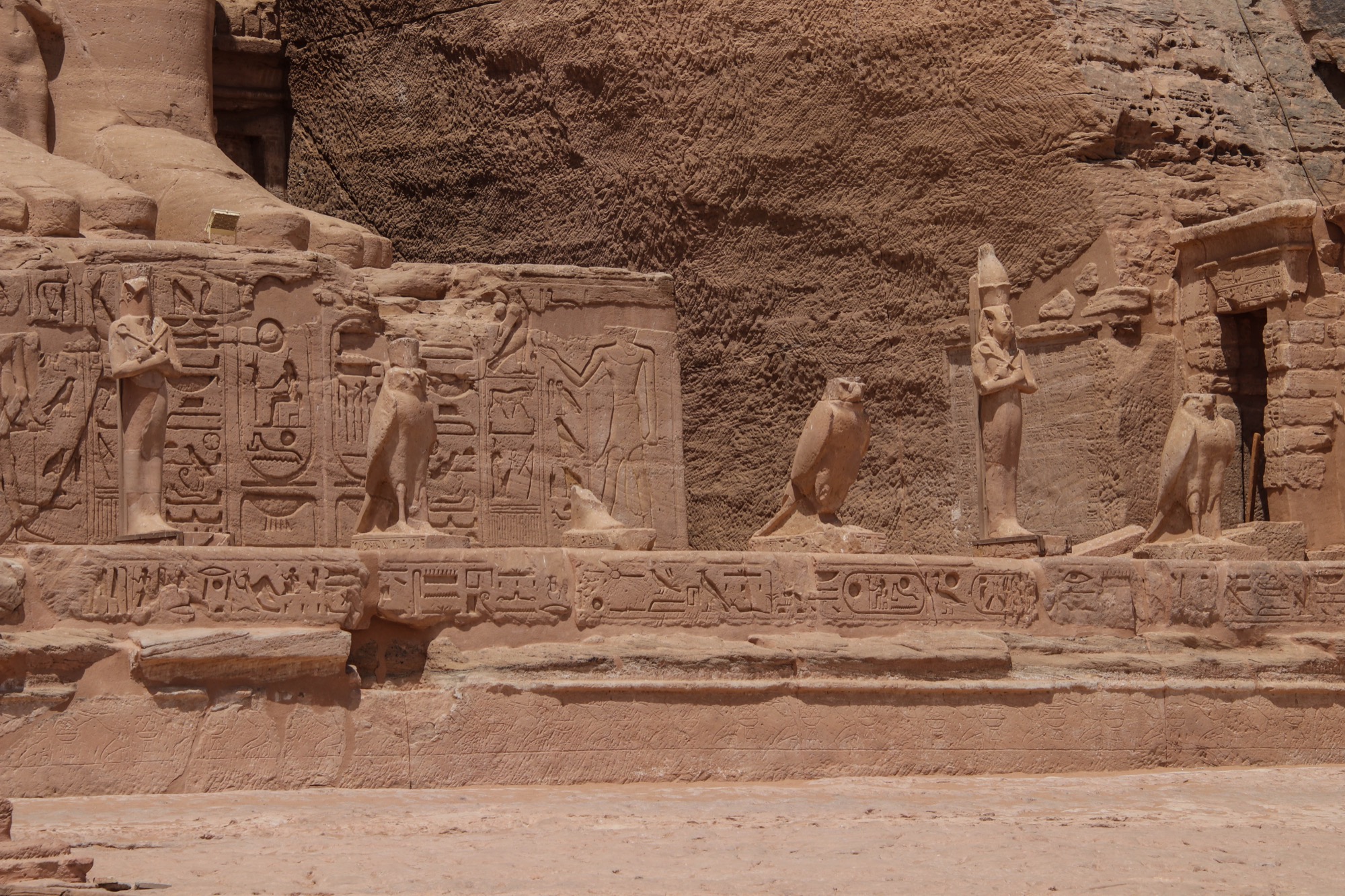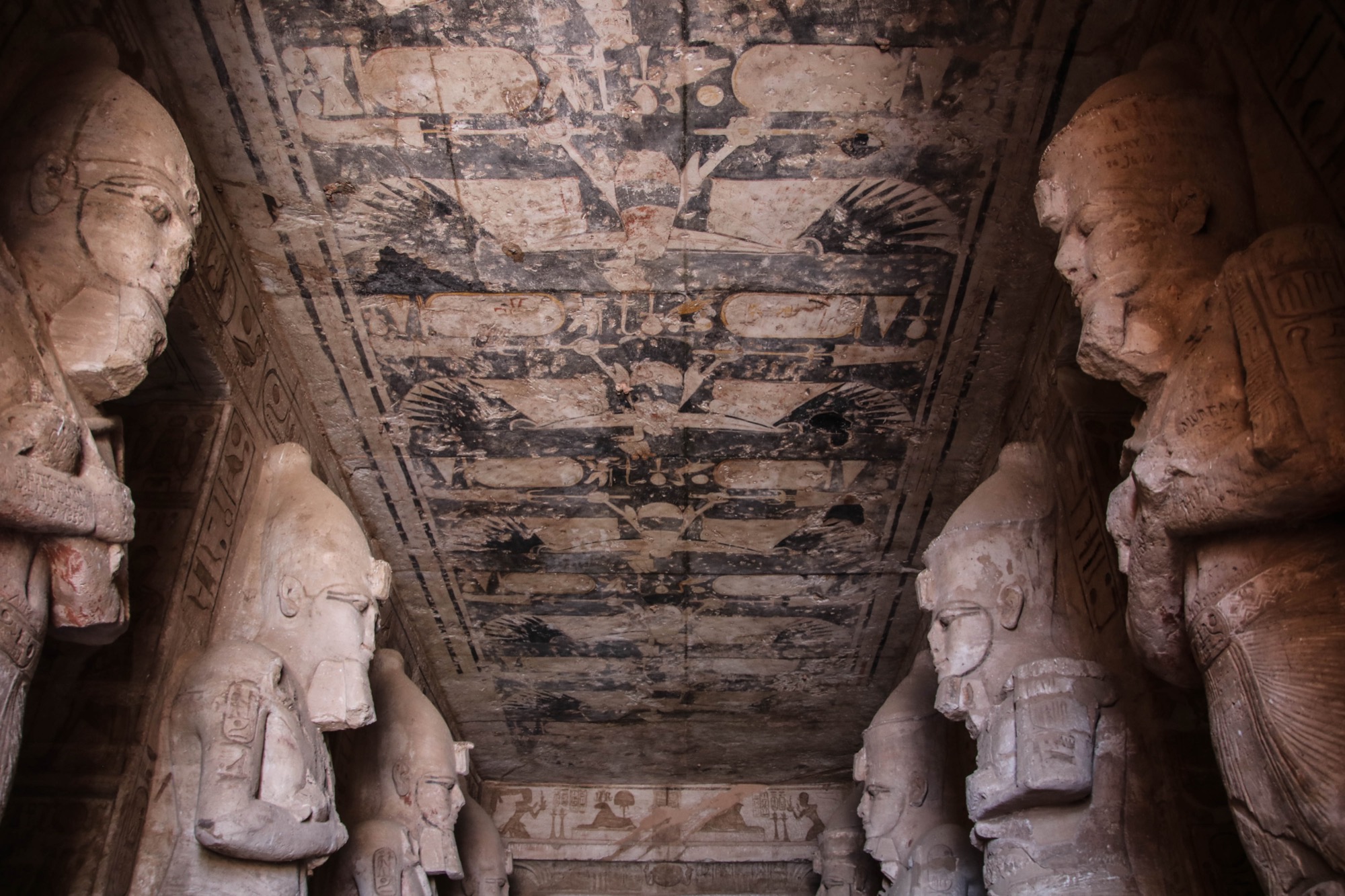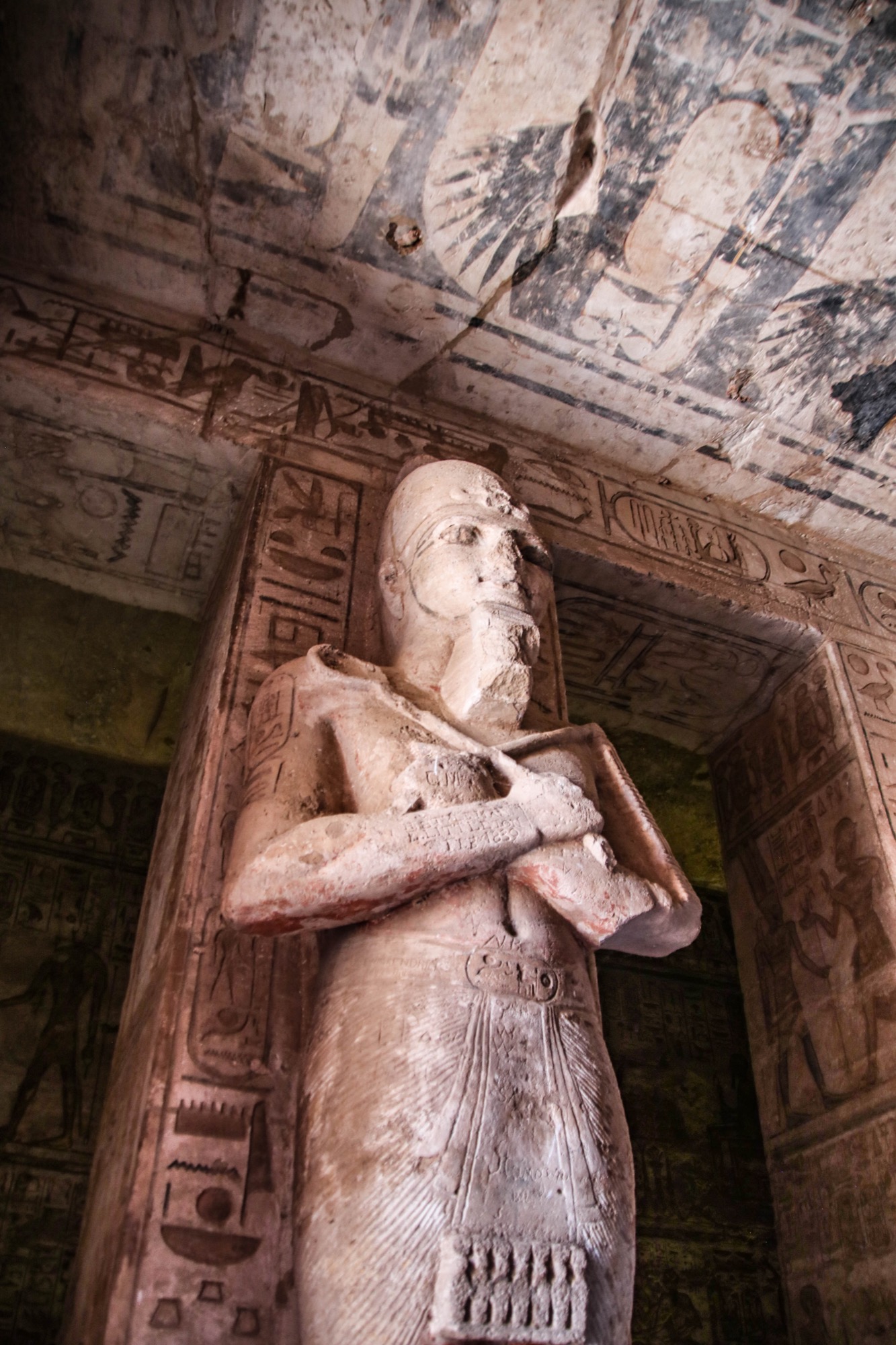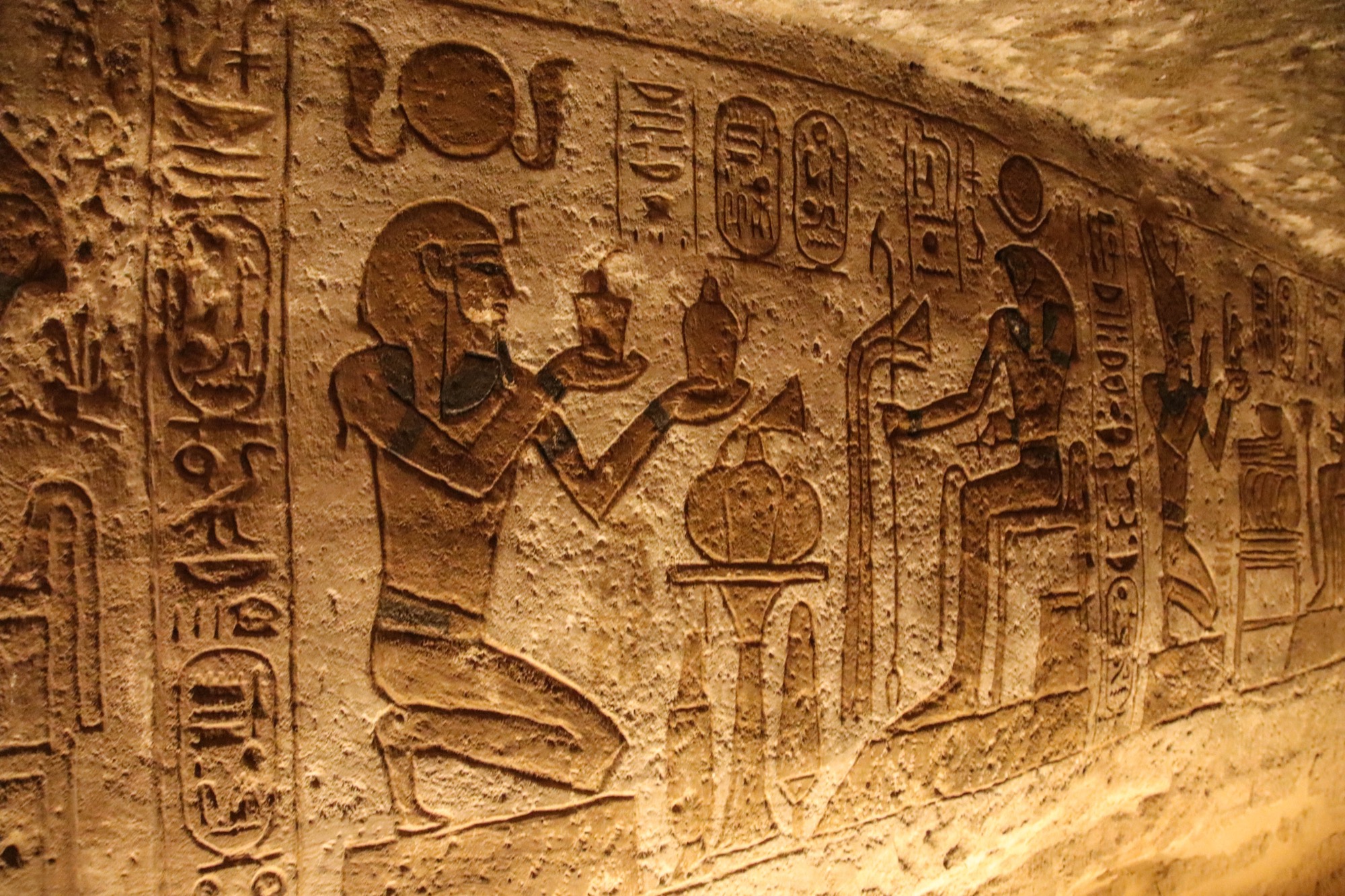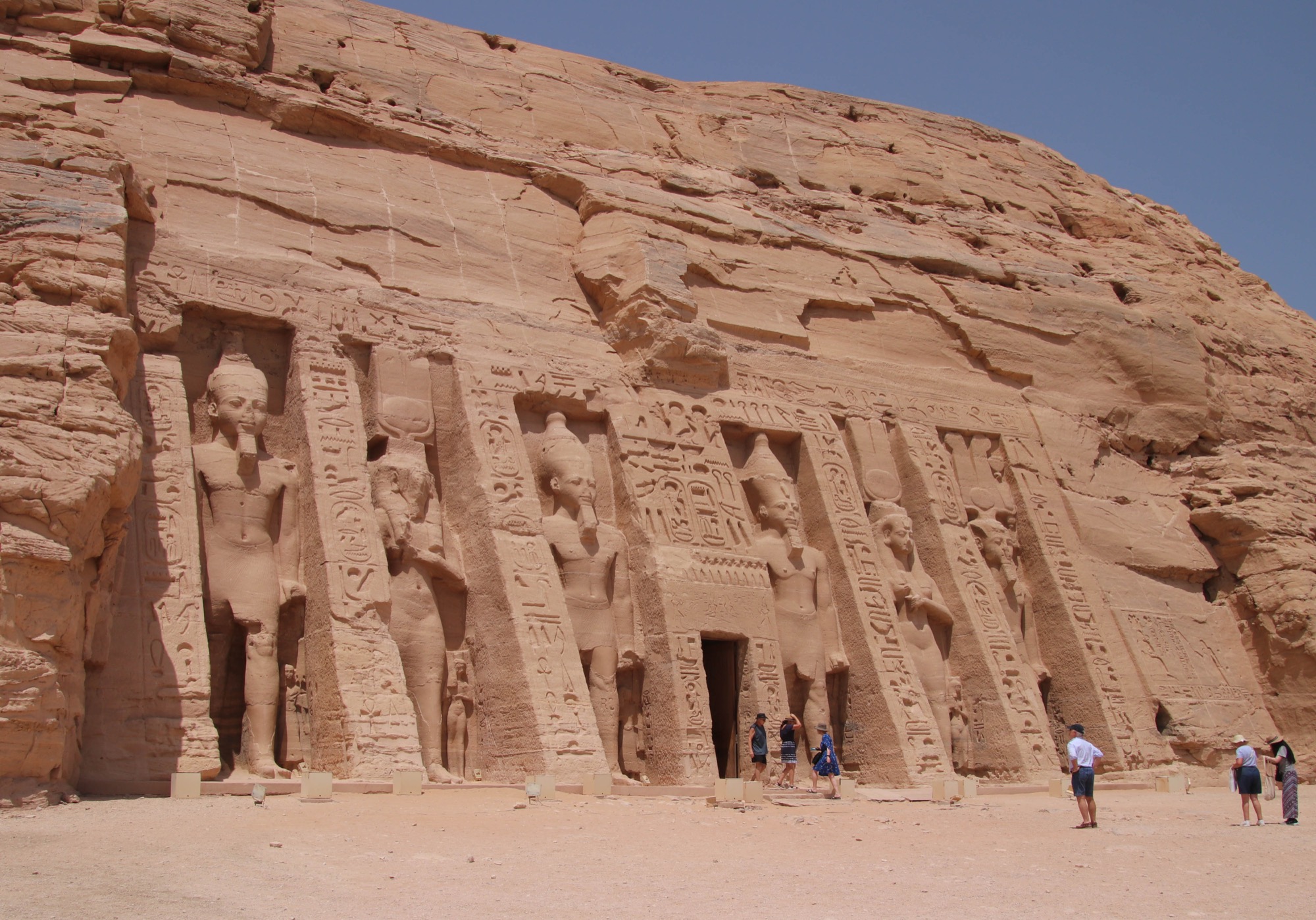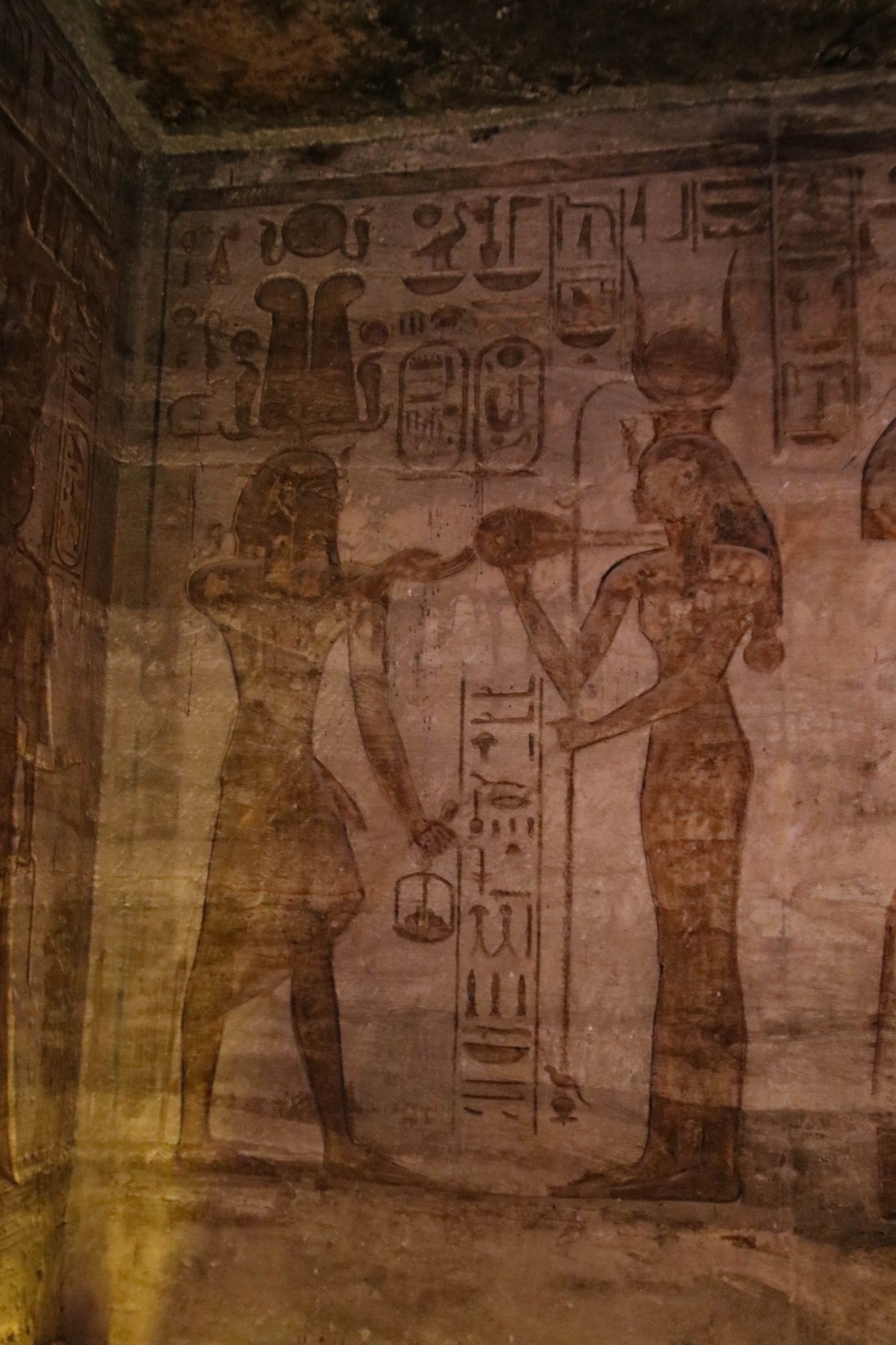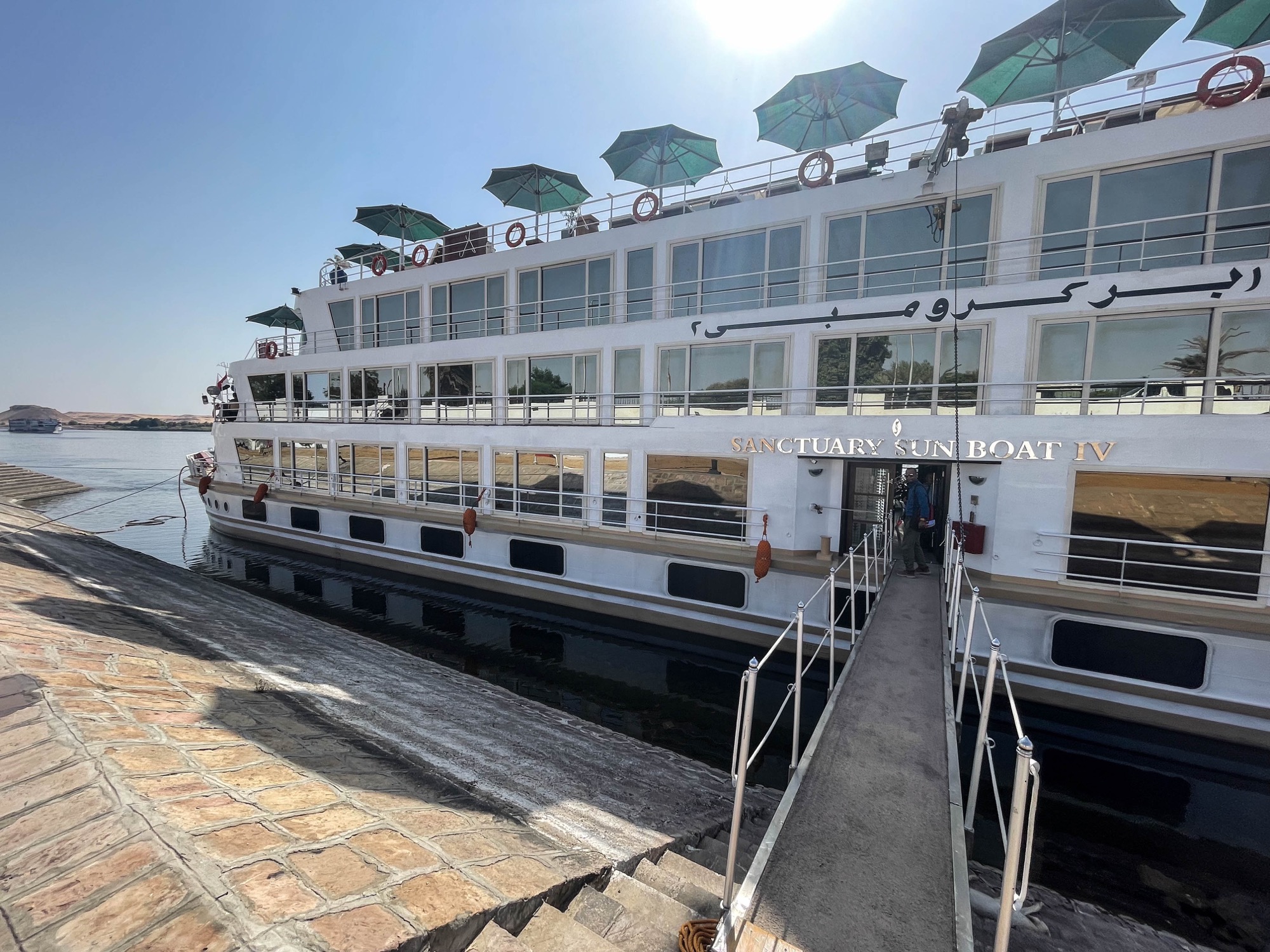Feeling a bit adventurous, we decided to see the inside of a pyramid. We went into the Great Pyramid of Khufu, the largest and tallest pyramid in Egypt. The inside of a pyramid is mostly stone without a great deal of open space. There are steep stairways, narrow passages, and very low ceilings. In order to make footing easier for the tourists, there are wooden ramps with slats and there are hand rails along the walls of the narrow passages. Inside the pyramid it is very hot.
Getting to the king's burial chamber is a steep uphill climb and a large part of the journey is through a passage that is less than four feet tall, so we were hunched over the entire time. Eventually we reached a section where we could stand upright, but it was very narrow and the steep uphill climb continued. At the very end, there is another low passage that leads to the king's burial chamber.
